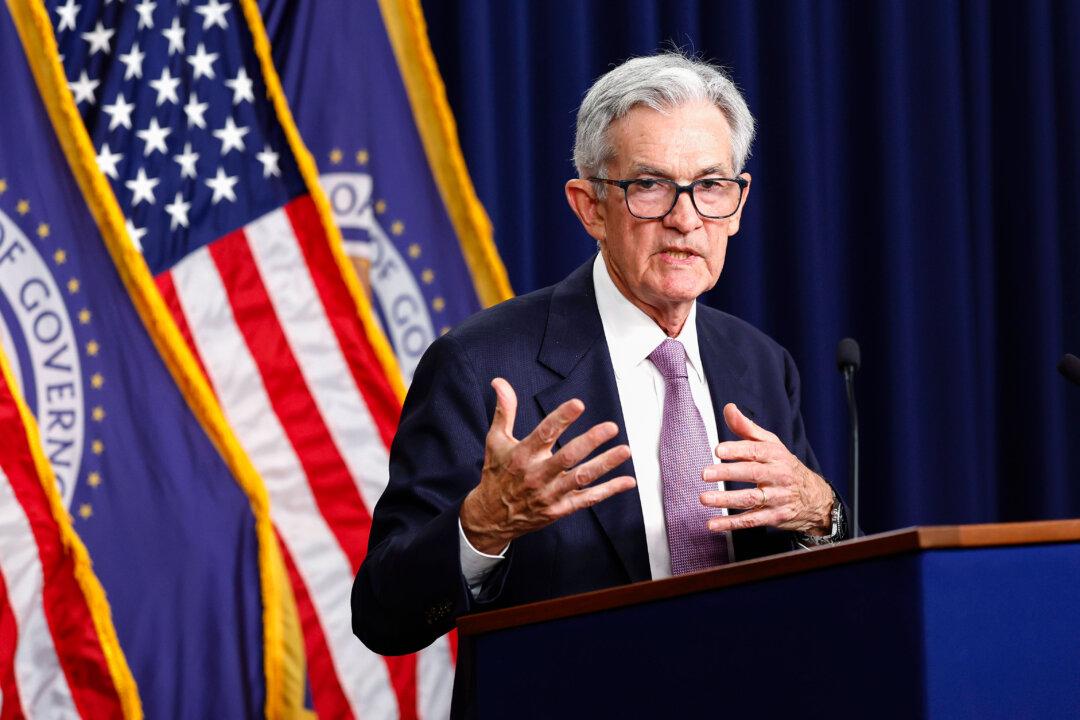Federal Reserve officials voted to cut interest rates at the September policy meeting, but according to new minutes, some were uncertain how aggressive they should be in kicking off the easing cycle.
The Fed lowered the benchmark federal funds rate by a super-sized 50 basis points, to a range of 4.75 to 5.0 percent. This was the first rate cut in more than four years. Fed Board member Michelle Bowman was the lone dissenting vote, advocating a quarter-point cut instead.
Last month’s meeting summary revealed several participants championed a smaller quarter-point rate cut because it might signal a stable path toward policy normalization.
“Several participants noted that a 25 basis-point reduction would be in line with a gradual path of policy normalization that would allow policymakers time to assess the degree of policy restrictiveness as the economy evolved,” the meeting summary states.
Other officials stated that such policy normalization would be more important than the initial size of the rate cut “in determining the degree of policy restriction.”
Several central bank policymakers reiterated the widespread concern that unwinding policy restraint too soon or too much could threaten a reversal of the institution’s progress on inflation.
“Some participants noted that uncertainties concerning the level of the longer-term neutral rate of interest complicated the assessment of the degree of restrictiveness of policy and, in their view, made it appropriate to reduce policy restraint gradually,” the document states.
The staff’s outlook for the broader economy remained largely intact from the July meeting, though growth projections for the second half of 2024 were adjusted slightly downward amid softer-than-expected labor market indicators.
One group of meeting participants alluded to the steady increase in the unemployment rate since April 2023 and businesses “taking steps such as posting fewer openings, reducing hours, or making use of attrition.” Others referenced statistics showing “lower readings on hiring and job vacancies, reduced quits and job-finding rates, and widespread reports from business contacts of less difficulty in hiring workers.”
Since the September policy meeting, various data points suggest the national labor market might be stronger than expected. The economy created 254,000 new jobs, and the unemployment rate dipped to 4.1 percent.
Monetary policymakers expect the median policy rate to fall to 4.4 percent by the end of the year, indicating officials will follow through on 50 basis points worth of cuts.
Investors are debating whether the Fed will announce another half-point rate cut next month or implement two quarter-point cuts.
However, speaking at a National Association for Business Economics event last month, Fed Chair Jerome Powell signaled that he and his colleagues will not be as aggressive on the way down to lower interest rates.

“This is not a committee that feels like it’s in a hurry to cut rates quickly,” Powell said. “If the economy performs as expected, that would mean two more rate cuts this year, a total of 50 [basis points] more.”
What Fed Officials Are Saying
Ahead of the FOMC minutes, a chorus of Fed officials delivered prepared remarks and participated in events, advocating a more gradual approach to unwinding tight monetary policy.“If the economy evolves as I currently expect, a strategy of gradually lowering the policy rate toward a more normal or neutral level can help manage the risks and achieve our mandated goals,” Logan said in an Oct. 9 speech.
“There is a lot to monitor. I think humility is always warranted, and we have learned there can be surprises along the way,” Collins said. ”My confidence in the disinflation trajectory has increased—but so have the risks of the economy slowing beyond what is needed to restore price stability.”







